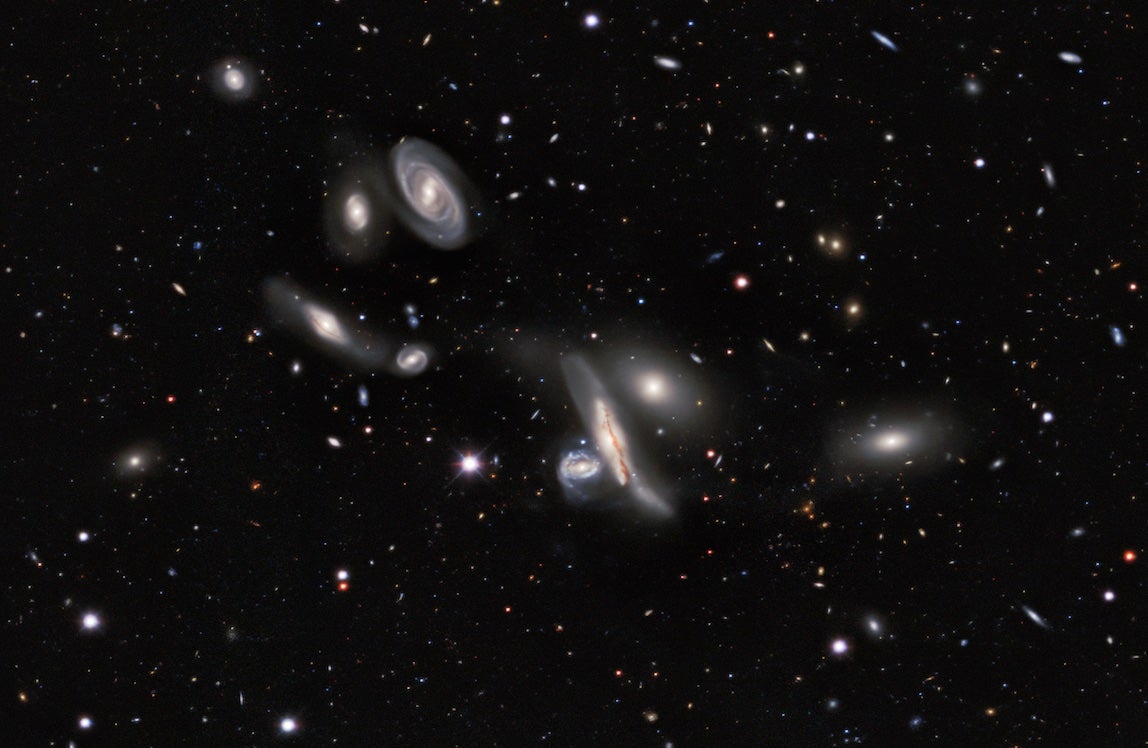
In 1874, Scottish astronomer Ralph Copeland was an assistant to William Parsons, Earl of Rosse. In April, while scanning the constellation Leo with Parsons’ 72-inch speculum-mirror reflector — the Leviathan of Parsonstown — Copeland was the first to spot this compact galaxy group. When he wrote a description for the New General Catalogue, he described five of the galaxies as “pretty bright.” Well, he was using a 72-inch scope. And although you don’t need such an optical behemoth to view these objects, you will need at least a 14-inch instrument, perfect seeing (atmospheric stability), and a dark site.
Also known as Hickson 57, this group lies 5.7° east-northeast of magnitude 2.6 Zosma (Delta [δ] Leonis). It spans an area 5′ by 2′. The seven galaxies that make up the Septet are magnitude 15.2 NGC 3745, magnitude 14.0 NGC 3746, magnitude 14.8 NGC 3748, magnitude 15.0 NGC 3750, magnitude 15.0 NGC 3751, magnitude 14.5 NGC 3753, and magnitude 14.3 NGC 3754. Note that the magnitudes for these galaxies vary somewhat depending on the source you reference.
One key to successfully observing Copeland’s Septet is patience, especially through telescopes smaller than 18 inches in aperture. Spotting all seven can take a while, but identifying them is easy if you’ve first printed out a finder chart. Another key is letting the group climb to its highest point in the sky. A third depends on your site’s seeing. If the stars overhead are twinkling, move on to your next target and try for the Septet another night.









